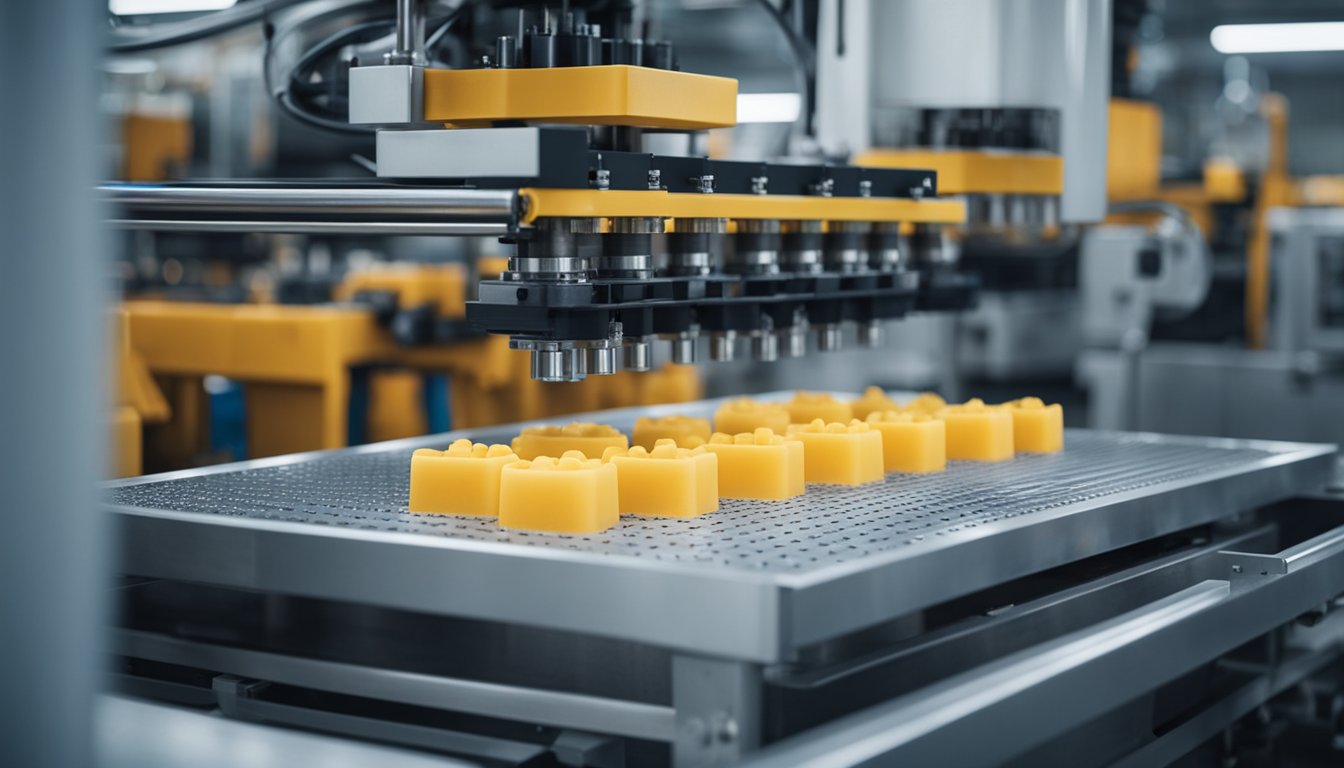Contact
Write to Us And We Would Be Happy to Advise You.
Do you have any questions, or would you like to speak directly with a representative?
By peter
If you’re in the market for a custom keypad, you may want to consider a silicone option. Silicone keypads offer many benefits over traditional plastic or metal keypads, including durability, flexibility, and customization options.

Silicone keypads are made from a soft, rubber-like material that is highly resistant to wear and tear. This makes them ideal for use in applications where the keypad will be subjected to frequent use or harsh environments. Additionally, silicone keypads are highly flexible, which allows them to conform to the shape of the device they are being used with. This can help improve the overall user experience by making the keypad more comfortable to use.
One of the biggest advantages of silicone keypads is the ability to customize them to meet your specific needs. This can include choosing the size, shape, and color of the keypad, as well as the layout of the buttons. Additionally, silicone keypads can be printed with custom graphics or text, which can help improve brand recognition or make the keypad easier to use. Overall, if you’re looking for a durable, flexible, and customizable keypad option, a custom silicone keypad may be the right choice for you.

When designing a custom silicone keypad, there are several important considerations to keep in mind. These include material selection, tactile response, and durability requirements.
Choosing the right material for your silicone keypad is critical to ensuring its longevity and functionality. Silicone rubber is a popular choice due to its flexibility, durability, and resistance to extreme temperatures and chemicals. Other materials, such as thermoplastic elastomers (TPE), may also be suitable depending on the specific application.
When selecting a material, it is important to consider factors such as the operating environment, the intended use of the keypad, and any regulatory requirements that must be met.
The tactile response of a silicone keypad refers to the amount of force required to activate a button and the feedback provided to the user. This is determined by the design of the keypad’s dome or button shape and the material used.
A keypad with a high tactile response provides a satisfying click or snap when a button is pressed, while a low tactile response may feel mushy or unresponsive. The choice of tactile response should be based on the intended use of the keypad and the preferences of the end user.
Silicone keypads are designed to withstand heavy use and harsh environments. When designing a custom keypad, it is important to consider the durability requirements of the application. This includes factors such as the expected lifespan of the keypad, the frequency of use, and any exposure to extreme temperatures or chemicals.
To ensure maximum durability, it is important to choose materials and designs that can withstand the specific conditions of the application. This may include adding features such as protective coatings or reinforced button walls.
By carefully considering these design considerations, you can create a custom silicone keypad that meets the needs of your application and provides reliable performance over the long term.

When it comes to creating custom silicone keypads, the manufacturing process is an essential aspect. The process involves several steps, including molding techniques and post-curing procedures.
The molding process is critical to creating custom silicone keypads. The process involves creating a mold that will be used to shape the silicone into the desired shape. There are several molding techniques, including compression molding, transfer molding, and injection molding.
Compression molding involves placing the silicone material into the mold and compressing it using heat and pressure. Transfer molding is similar to compression molding but involves transferring the silicone material from a chamber into the mold. Injection molding involves injecting the silicone material into the mold under high pressure.
Once the silicone has been molded into the desired shape, post-curing procedures are necessary to ensure the silicone keypads are fully cured and ready for use. Post-curing procedures involve exposing the silicone to high temperatures for an extended period.
The post-curing process can take up to 24 hours, depending on the silicone material used and the desired properties of the final product. It is essential to follow the recommended post-curing procedures to ensure the silicone keypads are of high quality and meet the required specifications.
In conclusion, the manufacturing process of custom silicone keypads involves several critical steps, including molding techniques and post-curing procedures. It is essential to follow the recommended procedures to ensure the final product is of high quality and meets the desired specifications.
When it comes to custom silicone keypads, there are several options available for customization. Here are some of the most popular customization options:
One of the most common ways to customize a silicone keypad is through color. With custom silicone keypads, you can choose from a wide range of colors to match your brand or product. This option is particularly useful if you want your keypad to stand out or if you want it to blend in with the rest of your product.
Another popular customization option is surface textures. You can choose from a variety of textures, including smooth, matte, and textured. Textured surfaces can provide a better grip and prevent slipping, making them ideal for certain applications.
Custom silicone keypads can also be customized in terms of key shapes and sizes. Depending on the application, you may want larger or smaller keys, or keys with different shapes. You can also choose to have your keys raised or recessed, depending on your needs.
In summary, custom silicone keypads offer a wide range of customization options, including color, surface textures, and key shapes and sizes. By choosing the right customization options, you can create a keypad that meets your specific needs and requirements.
Custom silicone keypads are highly versatile and can be integrated with various electronic devices. Here are some of the ways in which they can be integrated:
Silicone keypads can be integrated with electronic circuits to provide a tactile interface for users. The keypad can be designed to fit the specific requirements of the circuit, including the number of keys, the layout, and the shape. The keys can be backlit or have a different color to make them more visible, and they can be designed to provide a specific feel or resistance to the user.
Custom silicone keypads can be designed to fit different connector types, including PCB-mounted, wire-to-board, and wire-to-wire connectors. The connector type used depends on the specific application and the requirements of the electronic device. PCB-mounted connectors are ideal for devices that require a low profile, while wire-to-board and wire-to-wire connectors are more suitable for devices that require a flexible connection.
In summary, custom silicone keypads offer a wide range of integration options for electronic devices. By choosing the right circuit integration and connector type, you can ensure that your device is easy to use and provides a high level of functionality.
When it comes to custom silicone keypads, quality assurance is a crucial aspect. This section will cover the testing standards and lifetime assessment that ensure the quality of the silicone keypads.
To ensure that the custom silicone keypads meet the required standards, they undergo various tests. These tests include:
The lifetime assessment of custom silicone keypads is crucial to ensure that they can withstand the test of time. The lifetime assessment includes:
In conclusion, the quality assurance of custom silicone keypads is crucial to ensure that they meet the required standards and can withstand the test of time. The testing standards and lifetime assessment ensure that the silicone keypads are durable, reliable, and functional.
Do you have any questions, or would you like to speak directly with a representative?